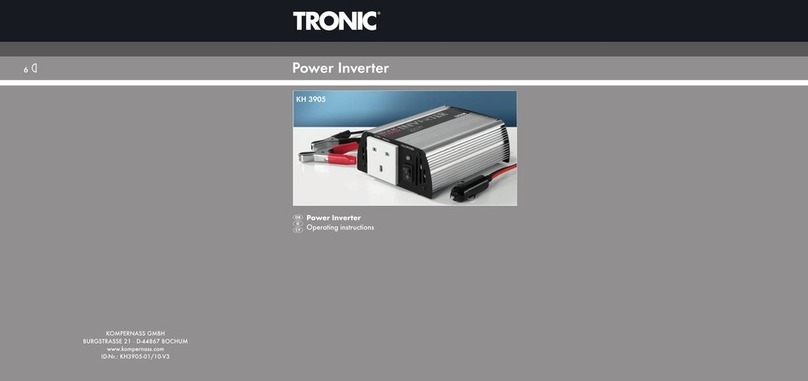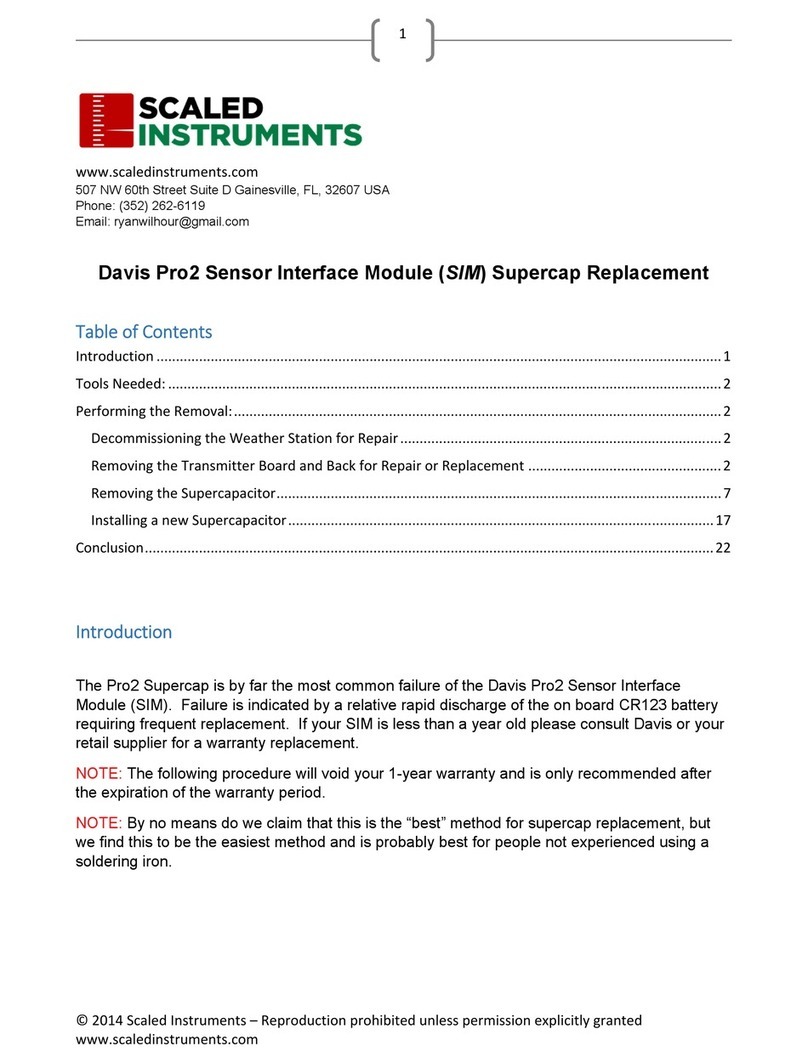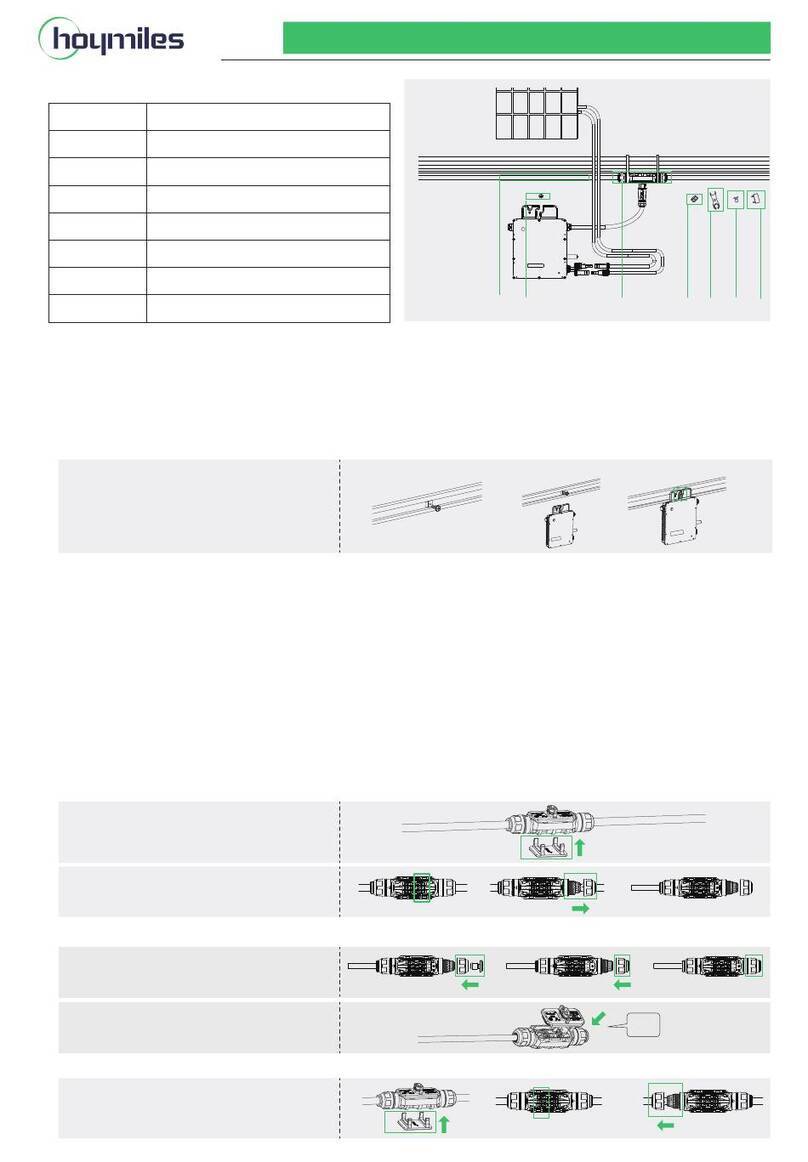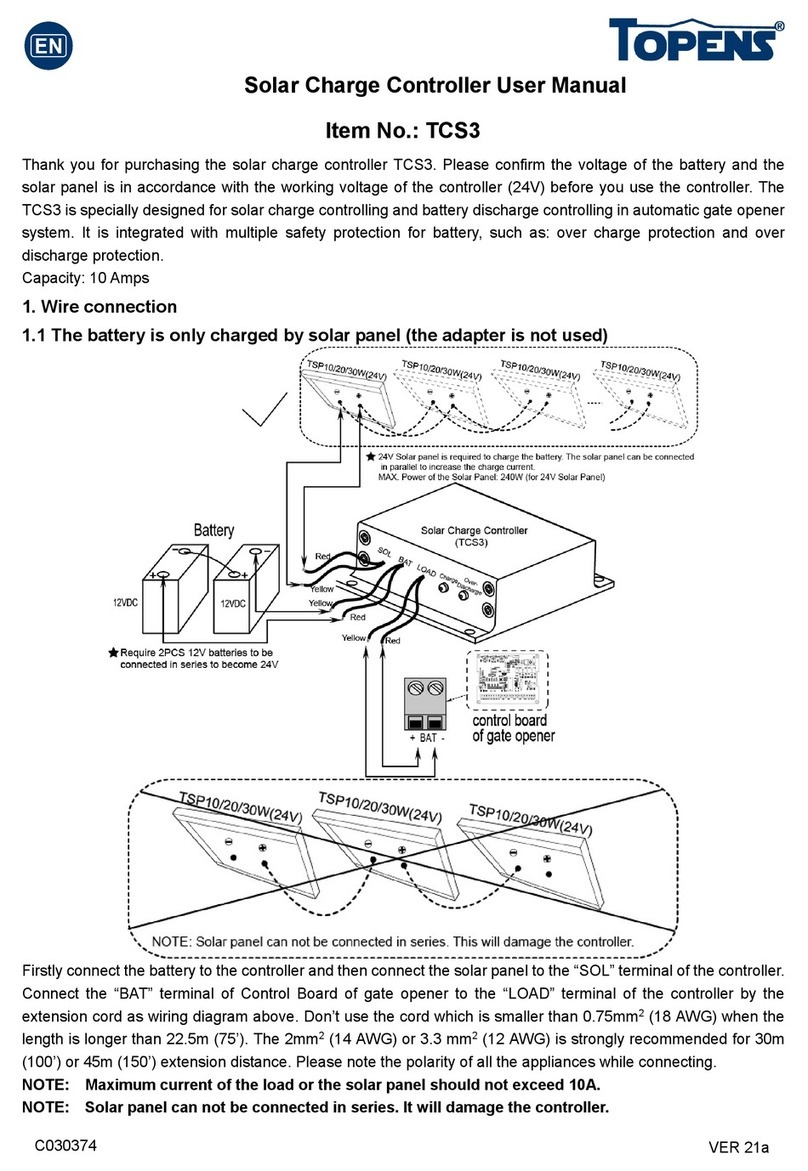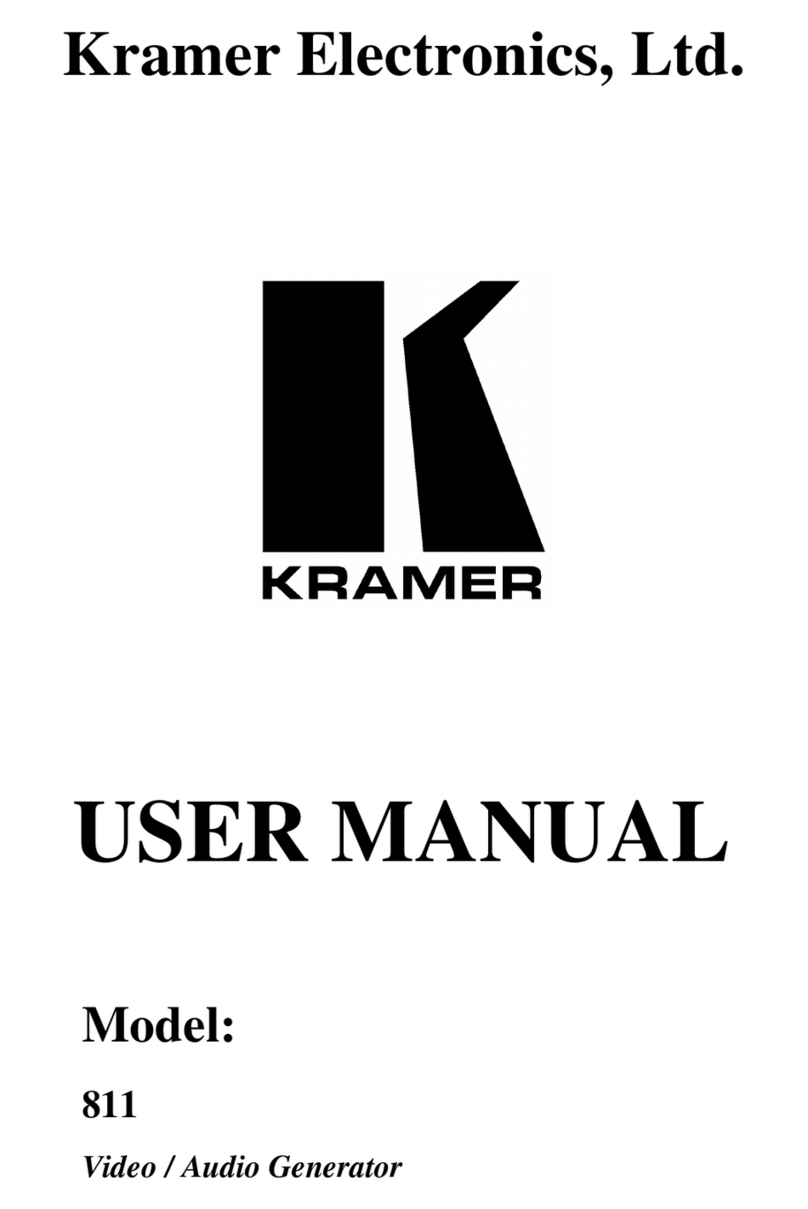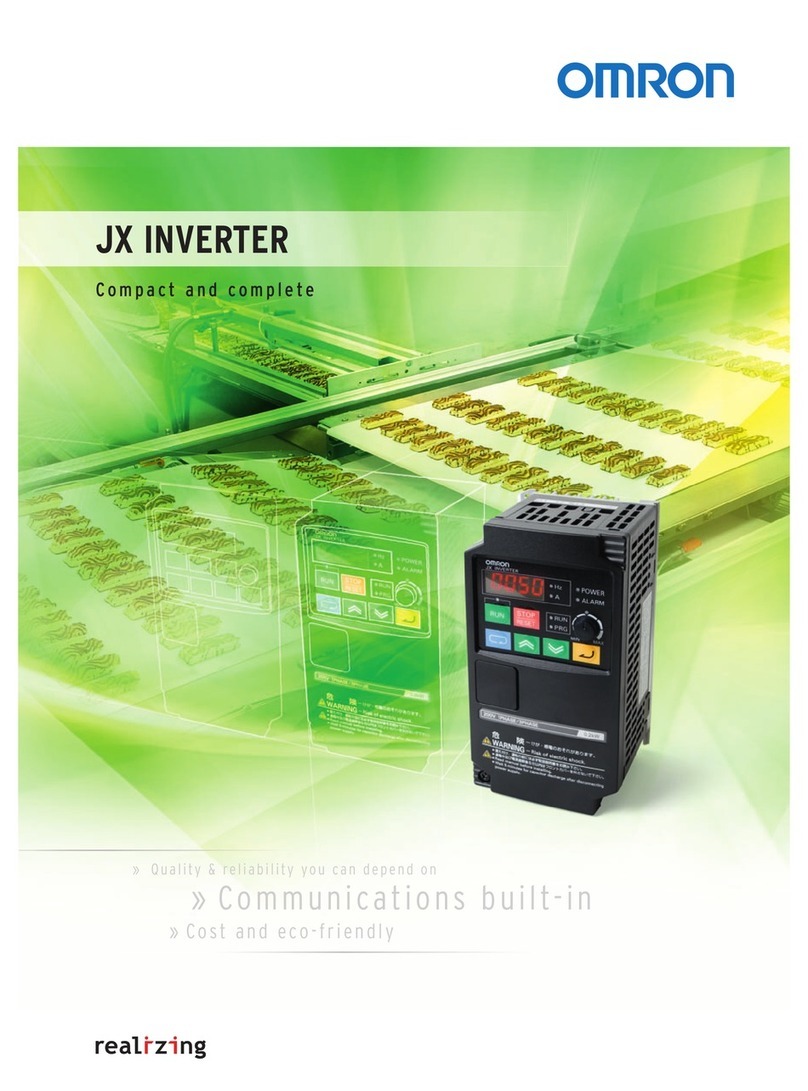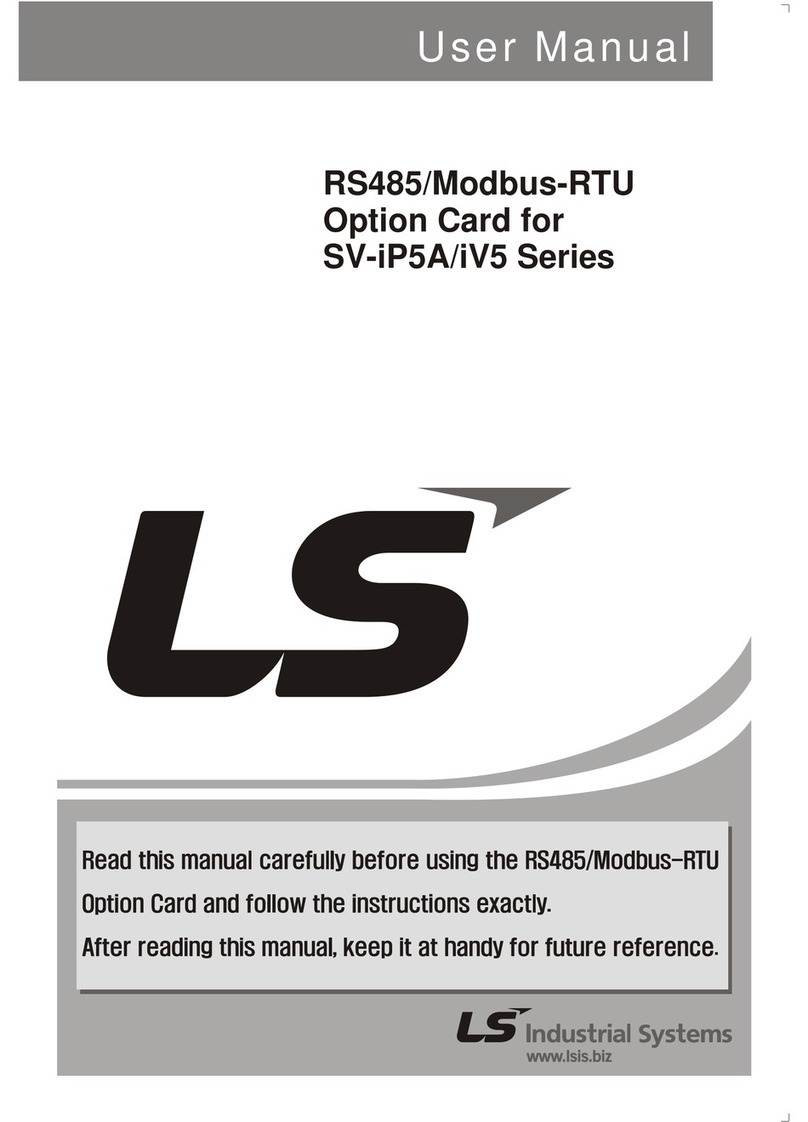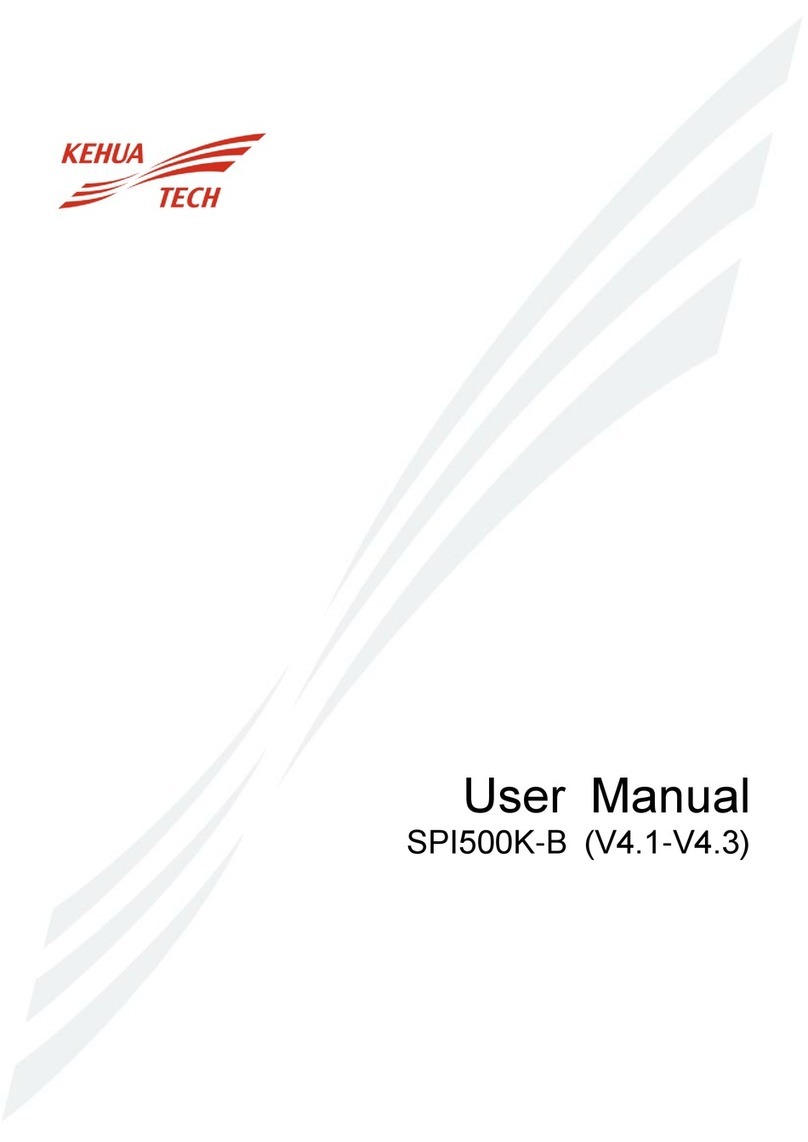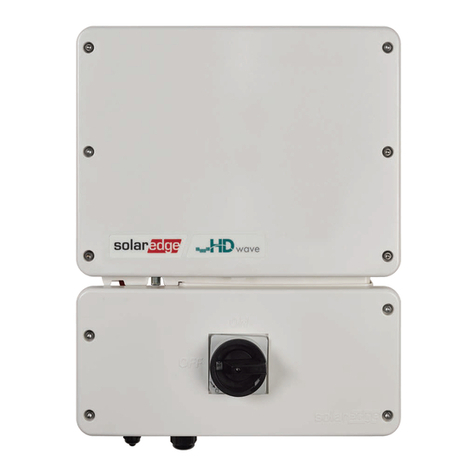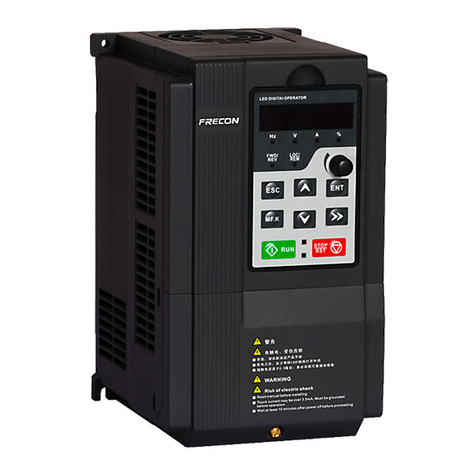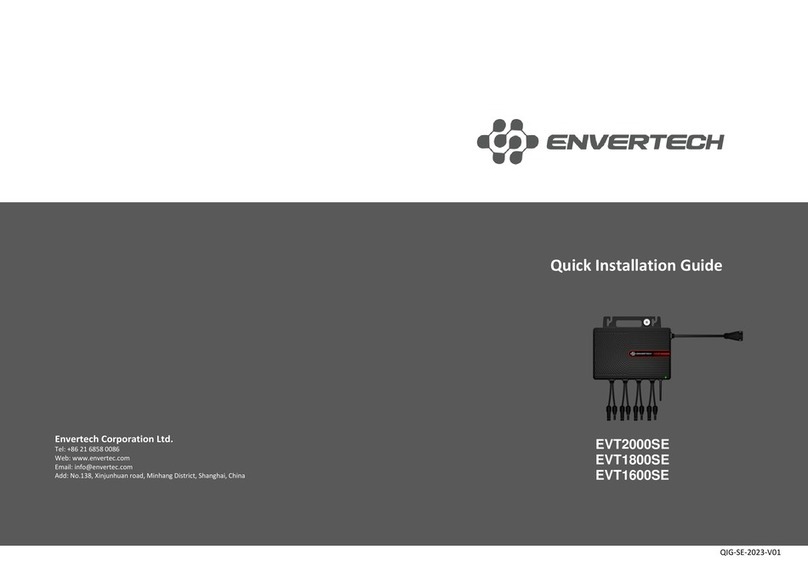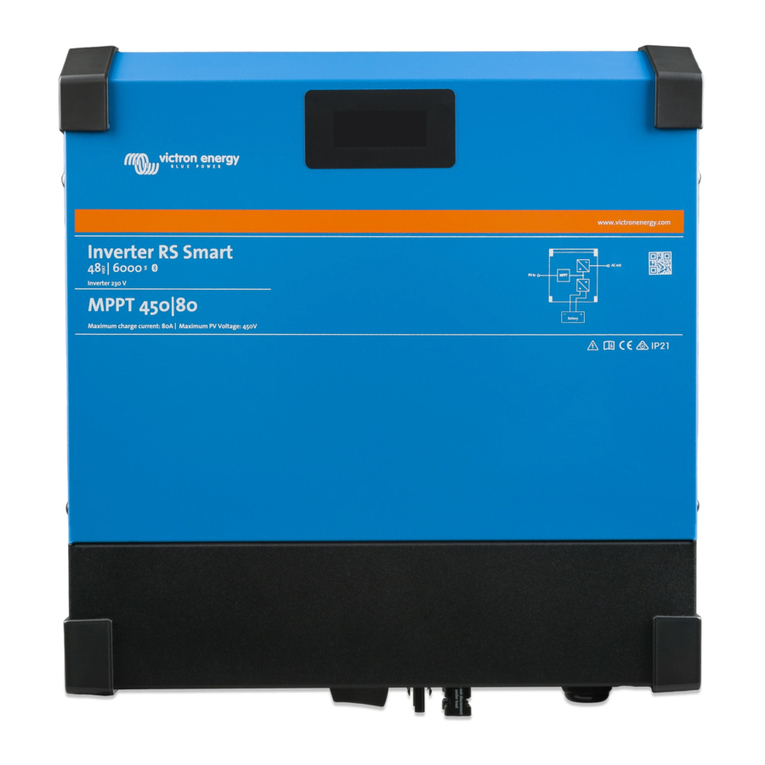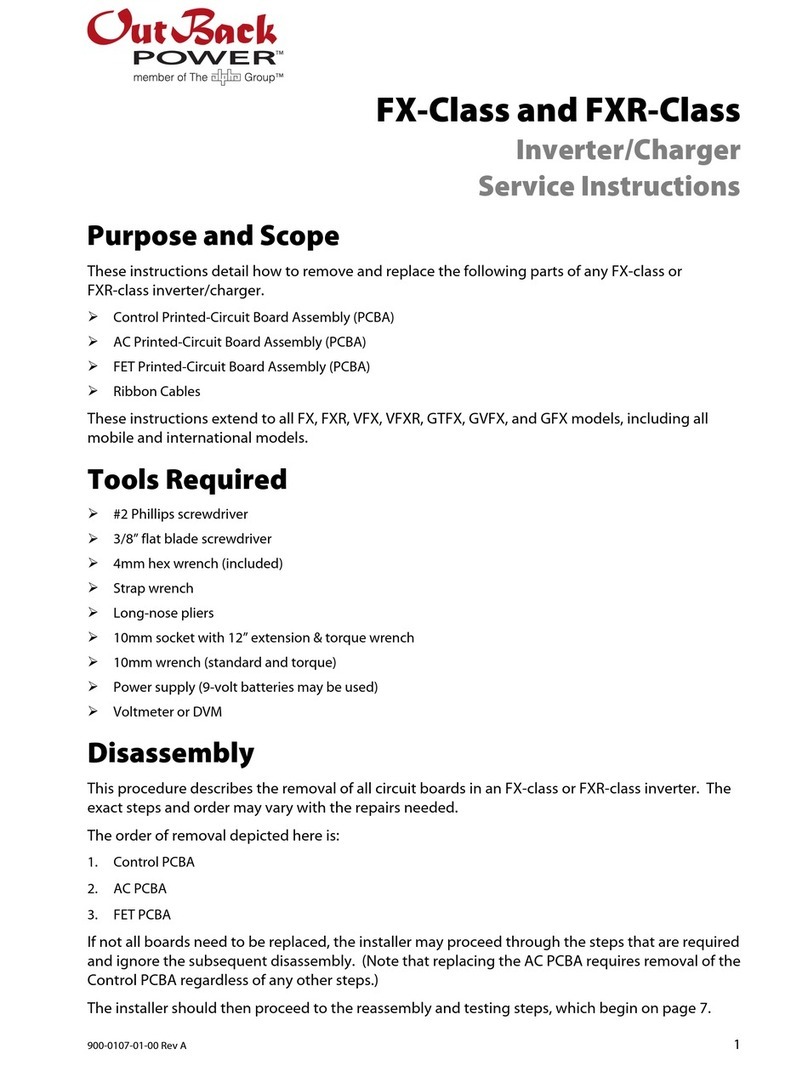Tronic TSW 150 A1 User manual

IAN 93815
POWER INVERTER TSW 150 A1
POWER INVERTER
Operating instructions
NAPETOSTNI PRETVORNIK
Navodila za uporabo
KONWERTER SAMOCHODOWY
Instrukcja obsługi
TRANSFORMÁTOR NAPÄTIA
Návod na obsluhu
MĚNIČ NAPĚTÍ
Návod k obsluze
SPANNUNGSWANDLER
Bedienungsanleitung
CV_93815_TSW150A1_LB4.indd 2CV_93815_TSW150A1_LB4.indd 2 05.11.13 08:2805.11.13 08:28

GB Operating instructions Page 1
PL Instrukcja obsługi Strona 11
SI Navodila za uporabo Stran 21
CZ Návod k obsluze Strana 31
SK Návod na obsluhu Strana 41
DE / AT / CH Bedienungsanleitung Seite 51
Before reading, unfold the page containing the illustrations and familiarise yourself with all functions of
the device.
Przed przeczytaniem proszę rozłożyć stronę z ilustracjami, a następnie proszę zapoznać się z wszystkimi
funkcjami urządzenia.
Pred branjem odprite stran s slikami in se nato seznanite z vsemi funkcijami naprave.
Před čtením si otevřete stranu s obrázky a potom se seznamte se všemi funkcemi přístroje.
Pred čítaním si odklopte stranu s obrázkami a potom sa oboznámte so všetkými funkciami prístroja.
Klappen Sie vor dem Lesen die Seite mit den Abbildungen aus und machen Sie sich anschließend mit allen
Funktionen des Gerätes vertraut.
CV_93815_TSW150A1_LB4.indd 3CV_93815_TSW150A1_LB4.indd 3 05.11.13 08:2805.11.13 08:28

CV_93815_TSW150A1_LB4.indd 4CV_93815_TSW150A1_LB4.indd 4 05.11.13 08:2805.11.13 08:28

- 1 -
GB
CONTENT PAGE
Introduction 2
Correct Usage 2
Safety information 2
Technical data 3
Operating Elements 4
Initial operation 4
Unpacking.........................................................................................................................................4
Check the items supplied.................................................................................................................4
Operational information 4
Setup..................................................................................................................................................4
In vehicle operation..........................................................................................................................4
Connection to a voltage source......................................................................................................5
Connection and operation of a load/device 5
Device operation information 5
General notes ...................................................................................................................................5
Low battery signal 6
Charging the USB device 6
Exchanging the Cable Fuse 6
Handling general failures 7
Television sets....................................................................................................................................7
Audio systems ...................................................................................................................................7
Troubleshooting 7
Low output voltage...........................................................................................................................7
Low battery voltage signal sounds continually..............................................................................7
No output power..............................................................................................................................7
Cleaning 8
Cleaning the housing .......................................................................................................................8
Disposal 8
Disposing of the device....................................................................................................................8
Disposal of packaging.....................................................................................................................8
Importer 8
Warranty & Service 9
IB_93815_TSW150A1_GB_LB4.qxd 04.11.2013 9:45 Uhr Seite 1

- 2 -
Introduction
Congratulations on the purchase of your new appli-
ance. You have clearly decided in favour of a quality
product. These operating instructions are a part of
this product. They contain important information in
regard to safety, use and disposal. Before using the
product, familiarise yourself with all of these opera-
ting and safety instructions. Use the product only as
described and only for the specified areas of appli-
cation. Retain these instructions for future reference.
In addition, pass these documents on, together with
the product, to any future owner.
Correct Usage
The device is intended for connection to a 12 V vehi-
cle power socket and an output of 220 - 240 V AC,
for the connection of electrical devices with a Euro
plug and a power consumption of up to 150W.
In addition, battery-powered devices with a USB
interface e.g. MP3 Players, can be charged from the
USB port.
The device is not intended for commercial or industrial
purposes.
No guarantee claims will be granted for damage
resulting from improper use!
Attention!
Sensitive electronic devices should not be
operated with the power inverter since the
output voltage is not sufficiently constant for
these devices.
Safety information
• This device is not intended for use by individuals
(including children) with restricted physical,
physiological or intellectual abilities or who are
lacking in experience and/or knowledge unless
they are supervised by a person responsible for
their safety or receive from this person instruction
in how the device is to be used. Children should
be supervised to ensure that they do not play
with the device.
• To avoid danger remove the power inverter from
the 12 V in vehicle receptacle after every use
and before each cleaning.
• Check the device and all parts for visible damage.
The safety concept of the device can only func-
tion when it is in faultless condition.
• The power inverter must always be easily accessible
so that, in case of emergency, it can be quickly
disconnected from the power supply system.
Risk of electrical shocks.
• Connect the power inverter only to a 12 V in
vehicle receptacle. Connecting the device to a
24 V supply could damage it.
• When connecting the power inverter make sure
that the polarity of the vehicle plug matches the
polarity of the 12 V in vehicle receptacle. The
socket must have an internal positive pole, that is
to say that the positive pole of a vehicle battery
cannot be connected to the chassis of the vehicle.
• You may not open the device casing or repair
the device yourself. Should you do so, the safety
of the device may be compromised and the
warranty becomes void.
• NEVER submerse the device in water.
Wipe it only with a slightly damp cloth.
This device suitable only for use indoors.
GB
IB_93815_TSW150A1_GB_LB4.qxd 04.11.2013 9:45 Uhr Seite 2

- 3 -
Risk of fire!
• Do not use the device near hot surfaces.
• Do not locate the device in places exposed to
direct sunlight, Otherwise, it may overheat and
become irreparably damaged. Do not operate
the device in a vehicle that is standing out in the sun.
• Do not leave the device unattended when in use.
• Do not cover the fan's ventilation slots when the
device is switched on.
• Do not place any open sources of fire, like candles,
on the device.
• Due to high crossover resistances heating of the
plug in connector can result when using the ca-
bles with a 12 V vehicle plug.
Notice regarding disconnection from
the power supply
• This device's on/off switch does not completely
disconnect the device from the vehicle's power
and/or the battery. When the vehicle plug is
connected power is still supplied to the device.
To completely disconnect the device from the
vehicle power supply the 12 V vehicle plug must
be removed from the 12 V vehicle receptacle.
Risk of personal injury!
• Keep children away from the connecting cable
and the device. Children frequently underestimate
the dangers of electrical appliances.
• Do not operate the device if it has fallen or is
damaged. Have the device checked and repaired
if necessary by qualified technicians.
Technical data
DC Input
Voltage: 12 V
Maximum voltage: 15,5 V
Maximum power
consumption: 20 A
Low voltage alarm: at 10,6 ± 0,3 V
Low voltage shutdown: at 10 ± 0,3 V
Over voltage shutdown: at 16 ± 0,5 V
AC Output
Voltage: 220-240 V ~50 Hz
Output power: 0,65 A
Continuous load: 150 W (> 4 h)/
170 W (30 min)
Peak load: 300 W (0,1 s)
Efficiency: approx. 85 %
Output wave form: modified sine
Overload protection: 200 W (+/- 10%)
Temperature Switch-off: 65°C
(at 50 W +/- 5%
Loading)
USB Port
Voltage: 5 V
Output current: 500 mA
Fusing
Cable fuse: 20 A Car-type fuse
General data
Measurements (without vehicle plug)
(L x B x H): 181 x 75 x 61 mm
Weight: 460 g approx.
Operating temperature: 5°...40°C
Operational humidity: 0 - 80 %
(relative humidity -
no condensation)
Subject to technical changes!
GB
IB_93815_TSW150A1_GB_LB4.qxd 04.11.2013 9:45 Uhr Seite 3

- 4 -
Operating Elements
qFan (on the rear panel)
w12 V vehicle plug
eOn/Off switch
r220-240 V Socket for Euro-plug
tOperation LED/Overload indicator
yUSB Port
uFuse holder
Initial operation
Unpacking
1. Remove the device from the packaging.
2. Remove all packaging materials from the device.
Warning:
Do not permit small children to play with
plastic packaging.
There is a risk of suffocation!
Check the items supplied
Before putting the device into use check to ensure
that all of the items listed are present and that there
are no visible signs of damage.
- Power inverter with 12 V vehicle plug
- 20 A flat car-type fuse
- This operating manual
Operational information
For continuous operation of devices via the power
inverter the 12 V vehicle socket must supply a voltage
between 11 - 15,5 V .
The voltage source of the 12 V vehicle socket can
be perhaps an automotive battery or a regulated
DC voltage like a transformer-accumulator station.
Before connecting the power inverter check to see
that the voltage source is supplying sufficient power
for operation.
The required power needed for operation can be
calculated as follows:
Example
The power source should also supply at least 14,7 A.
Attention!
Never connect the power inverter to a 24 V
supply system. Otherwise the device will be da-
maged. The device can only be connected to a
voltage source with a nominal voltage of 12 V.
Setup
• The power inverter should be positioned on an
even, flat surface. Make sure that there is 1 cm
free space remaining all around the power inverter
for air circulation.
• A distance of 50 cm must be maintained behind
the fan's qventilation slots.
In vehicle operation
If you are operating the power inverter in a vehicle
make sure that the installation is not a hindrance
when driving the vehicle. For this, install cables so
that they do not come into contact with moveable
parts in the vehicles interior and they do not obstruct
the view.
Note:
The power inverter can also be operated when
the engine is switched off. However be aware
that the power inverter possibly may not func-
tion during an engine startup.
GB
IB_93815_TSW150A1_GB_LB4.qxd 04.11.2013 9:45 Uhr Seite 4

- 5 -
Connection to a voltage source
Attention!
Before connecting the power inverter to a vol-
tage source make sure that the on/off switch e
on the device is in the position 0.
Attention!
Do not use the power inverter in vehicles who-
se plus pole is connected to the vehicle body
and/or the chassis.
The positive pole must be inside the 12 V recep-
tacle. Do not use the power inverter in vehicles
with positive earth 12 V receptacles. Otherwise
the device will be damaged.
• Insert the 12 V vehicle plug winto a 12 V
vehicle receptacle.
Connection and operation
of a load/device
Attention!
Before connecting a load/device to the power in-
verter make sure that the on/off switch eon
the device is in the position 0.
Make sure that the power of the load/device
to be run that you intend to connect to the po-
wer inverter does not exceed the continuous load
rating specified in the power inverter's technical
data.
• Insert the plug of the connecting load/the device
to be operated into the 220 - 240 V socket r
of the power inverter. Do not switch on the load/
device to be operated yet!
• Switch the power inverter on by moving the on/off
switch eto the position I. If the power inverter is
functioning properly the operation LED/Overload
indicator twill light up green.
• Now switch on the load/device to be operated.
When switched on a short signal tone can be
heard.
Note:
If a signal tone can be heard and the opera-
tion LED/Overload indicator tlights up red the
input voltage is too low or the power of the
load/device connected to the power inverter is
too high.
Device operation information
General notes
Usually on the device's rating plate you can find
information regarding the power consumption in
amperes (A) or the wattage (W).
Before operation make sure that the maximum power
consumption does not exceed 0,65 A and the maxi-
mum continuous load is not more than 150 W.
• Loads with a high internal resistance operate
very well with the power inverter, on the other
hand, loads with a low internal resistance, for
example heating and cooking devices have a
power consumption in watts that is too high.
• Inductive loads, for example, televisions or stereo
systems (devices with an inductor or a transformer)
often require a much greater switch on current
than resistance loads with the same specified
wattage. When switching on, television sets demand
much more power than that indicated on the
rating plate.
Therefore it may be necessary to switch the power
inverter on and off several times in order to switch
the television set on.
• In the event of uncertainty, please consult the
manufacturer of the connected appliance.
GB
IB_93815_TSW150A1_GB_LB4.qxd 04.11.2013 9:45 Uhr Seite 5

- 6 -
Low battery signal
• When the battery runs low (under 11 V) a conti-
nuous signal tone sounds to indicate that the bat-
tery needs to be charged. The operation
LED/Overload indicator tcontinues to light up
green.
• When the battery voltage drops below 10 V
the power inverter switches off and the operation
LED/Overload indicator tlights up red.
Charging the USB device
Attention!
Before connecting, check to ensure that the
power consumption of the USB device is not
higher than 500 mA. Further information is to
be found in the operating manual for your
USB device.
• Plug the USB connector of the USB device to the
USB port yof the voltage converter.
• If necessary, switch the USB device on.
Note:
The 220-240 V power socket rand the USB
connector ycan be used simultaneously.
Exchanging the Cable Fuse
Risk of potentially fatal electrical
shock:
Disconnect the power inverter from the power
source before changing the fuse. Also remove
any devices connected to the power inverter.
Replace the fuse with an equivalent type in regard
to the specified technical data and with the same
shut-off characteristics.
Before switching on and resuming operations with
the voltage converter, establish the cause for the
triggering of the fuse.
To exchange the fuse, proceed as follows:
• Loosen the screw on the fuse holder uusing a
Phillips screwdriver.
• Open the cover of the fuse holder uand pull
the flat car fuse from the holder.
• Install a new 20 A flat car-type fuse (supplied)
into the two connectors and replace the cover
onto the fuse holder u.
• Firmly screw the screw on the fuse holder u
back in.
GB
IB_93815_TSW150A1_GB_LB4.qxd 04.11.2013 9:45 Uhr Seite 6

- 7 -
Handling general failures
Television sets
• The power inverter is shielded and puts out a fil-
tered sine wave. With the reception of, for example,
very weak television stations it can, nevertheless,
result in interferences and/or image breakdown.
• In this case position the power inverter as far
away as possible from the television, antenna
cable and antenna.
• Reposition the power inverter, television, antenna
cable and antenna until reception improves.
• If possible use a high quality, shielded antenna
cable.
Audio systems
• Some audio/video systems issue a buzzing tone
through the speaker when they are being operated
via the power inverter. The reason for this is that
these devices can not filter the modified sine
wave of the power inverter and this is not a defect
in the power inverter.
Troubleshooting
Low output voltage
Possible cause and remedy:
• The power inverter is overloaded. Reduce the
load until you no longer exceed the maximum
load as specified in the technical data.
• The input voltage is below 11 V. Maintain the in-
put voltage of the power inverter above 11 V to
keep the output voltage constant.
Low battery voltage signal sounds
continually
Possible cause and remedy:
• The battery is defective. Replace the battery.
• Insufficient voltage or power supply. Check the
condition of the 12 V in vehicle receptacle and
the 12 V vehicle plug wand if necessary clean
these.
No output power
Possible cause and remedy:
• The power inverter is not fully warmed up.
Switch the power inverter on and off again until
the device attached to the power inverter is
supplied with power. Repeat this process in order
to switch the device on.
• The ignition must be switched on for the 12 V in
vehicle receptacle to be supplied with power.
Switch the ignition on and/or in the position I.
• The power inverter is overloaded. Reduce the
load until you no longer exceed the maximum
load as specified in the technical data.
GB
IB_93815_TSW150A1_GB_LB4.qxd 04.11.2013 9:45 Uhr Seite 7

- 8 -
• The power inverter is overheated. Wait until the
device has cooled down. Ensure that there is
sufficient ventilation space. Make sure that the
connected load does not continually exceed the
maximum load, in order to avoid overheating
again.
• The device fuse is burnt out. Consult the service
department in order to put the device back into
working condition. Make sure that the power in-
verter is connected to the power supply with the
correct polarity.
Cleaning
Risk of potentially fatal electrical
shock:
• Never submerse the device in water or other
liquids!
• Do not allow any liquids to penetrate the
housing.
• Before every cleaning remove the power in-
verter from the 12 V vehicle receptacle. Also
remove any devices connected to the power
inverter.
Cleaning the housing
Clean the housing surface with a slightly damp
cloth Never use benzene, solvents or detergents
that can damage plastics!
In the event that the ventilation slots become dusty
you can clean these with a soft brush.
Disposal
Disposing of the device
Do not dispose of the appliance in your
normal domestic waste. This product is
subject to the European guideline
2012/19/EU.
Dispose of the appliance through an approved
disposal centre or at your community waste facility.
Observe the currently applicable regulations.
In case of doubt, please contact your waste disposal
centre.
Disposal of packaging
Dispose of the packaging materials in an
environmentally responsible manner.
Importer
KOMPERNASS HANDELS GMBH
BURGSTRASSE 21
44867 BOCHUM, GERMANY
www.kompernass.com
GB
IB_93815_TSW150A1_GB_LB4.qxd 04.11.2013 9:45 Uhr Seite 8

- 9 -
Warranty & Service
The warranty for this appliance is for 3 years from
the date of purchase. The appliance has been manu-
factured with care and meticulously examined before
delivery. Please retain your receipt as proof of pur-
chase. In the event of a warranty claim, please make
contact by telephone with our Service Department.
Only in this way can a post-free despatch for your
goods be assured.
The warranty covers only claims for material and
manufacturing defects, but not for transport damage,
for wearing parts or for damage to fragile compo-
nents, e.g. buttons or batteries. This product is for
private use only and is not intended for commercial
use. The warranty is void in the case of abusive and
improper handling, use of force and internal tampe-
ring not carried out by our authorized service branch.
Your statutory rights are not restricted in any way by
this warranty.
The warranty period will not be extended by repairs
made under warranty. This applies also to replaced
and repaired parts. Any damage and defects extant
on purchase must be reported immediately after un-
packing the appliance, at the latest, two days after
the purchase date. Repairs made after the expiration
of the warranty period are subject to payment.
Service Great Britain
Tel.: 0871 5000 720 (£ 0.10/Min.)
E-Mail: k[email protected]
Service Ireland
Tel.: 1890 930 034
(0,08 EUR/Min., (peak))
(0,06 EUR/Min., (off peak))
E-Mail: k[email protected]
Hotline availability: Monday to Friday 08:00 -
20:00 (CET)
IAN 93815
IAN 93815
GB
IB_93815_TSW150A1_GB_LB4.qxd 04.11.2013 9:45 Uhr Seite 9

- 10 -
IB_93815_TSW150A1_GB_LB4.qxd 04.11.2013 9:45 Uhr Seite 10

PL
- 11 -
SPIS TREŚCI STRONA
Wstęp 12
Użytkowanie zgodne z przeznaczeniem 12
Wskazówki dotyczące bezpieczeństwa 12
Dane techniczne 13
Elementy obsługowe 14
Uruchomienie 14
Rozpakowanie . . . . . . . . . . . . . . . . . . . . . . . . . . . . . . . . . . . . . . . . . . . . . . . . . . . . . . . . . . . . .14
Sprawdzenie kompletności wyposażenia . . . . . . . . . . . . . . . . . . . . . . . . . . . . . . . . . . . . . . .14
Wskazówki eksploatacyjne 14
Ustawianie . . . . . . . . . . . . . . . . . . . . . . . . . . . . . . . . . . . . . . . . . . . . . . . . . . . . . . . . . . . . . . . .14
Używanie w samochodzie . . . . . . . . . . . . . . . . . . . . . . . . . . . . . . . . . . . . . . . . . . . . . . . . . . .14
Podłączenie do źródła zasilania . . . . . . . . . . . . . . . . . . . . . . . . . . . . . . . . . . . . . . . . . . . . . .15
Podłączenie i eksploatacja urządzenia / odbiornika 15
Wskazówki odnośnie eksploatacji urządzeń 15
Wskazówki ogólne . . . . . . . . . . . . . . . . . . . . . . . . . . . . . . . . . . . . . . . . . . . . . . . . . . . . . . . . .15
Sygnalizacja niskiego napięcia w akumulatorze 16
Ładowanie urządzenia USB 16
Wymiana bezpiecznika na kablu 16
Ogólne informacje odnośnie postępowania w razie awarii 17
Telewizory . . . . . . . . . . . . . . . . . . . . . . . . . . . . . . . . . . . . . . . . . . . . . . . . . . . . . . . . . . . . . . . .17
Sprzęt audio . . . . . . . . . . . . . . . . . . . . . . . . . . . . . . . . . . . . . . . . . . . . . . . . . . . . . . . . . . . . . .17
Usuwanie usterek 17
Niskie napięcie wyjściowe . . . . . . . . . . . . . . . . . . . . . . . . . . . . . . . . . . . . . . . . . . . . . . . . . . .17
Ciągle rozbrzmiewa sygnał informujący o niskim napięciu w akumulatorze . . . . . . . . . . . .17
Brak mocy na wyjściu . . . . . . . . . . . . . . . . . . . . . . . . . . . . . . . . . . . . . . . . . . . . . . . . . . . . . . .17
Czyszczenie 18
Czyszczenie urządzenia . . . . . . . . . . . . . . . . . . . . . . . . . . . . . . . . . . . . . . . . . . . . . . . . . . . . .18
Utylizacja 18
Utylizacja urządzenia . . . . . . . . . . . . . . . . . . . . . . . . . . . . . . . . . . . . . . . . . . . . . . . . . . . . . . .18
Utylizacja opakowania . . . . . . . . . . . . . . . . . . . . . . . . . . . . . . . . . . . . . . . . . . . . . . . . . . . . . .18
Importer 18
Gwarancja i serwis 19
IB_93815_TSW150A1_PL_LB4.qxd 04.11.2013 9:46 Uhr Seite 11

- 12 -
Wstęp
Gratulujemy Ci zakupu naszego urządzenia.
Jest to produkt wysokiej jakości. Instrukcja obsługi
stanowi część tego produktu. Zawiera ona ważne
wskazówki dotyczące bezpieczeństwa, użytkowa-
nia i utylizacji urządzenia. Przed przystąpieniem do
użytkowania produktu zapoznaj się z wszystkimi
wskazówkami obsługi i bezpieczeństwa. Używaj
produkt zgodnie z opisem i w podanych obszarach
użytkowania. Instrukcję obsługi przechowuj zawsze
w bezpiecznym miejscu. W razie przekazania pro-
duktu następnej osobie, nie zapomnij dołączyć rów-
nież instrukcji obsługi.
Użytkowanie zgodne z
przeznaczeniem
Urządzenie można podłączać do gniazdka 12 V
samochodowej instalacji elektrycznej oraz do wyjś-
cia 220–240 V napięcia przemiennego przystoso-
wanego do podłączania urządzeń elektrycznych z
wtyczką typu Euro i o poborze prądu 150 W.
Dodatkowo do przyłącza USB możesz podłączyć
urządzenie zasilane akumulatorowo wyposażone
w interfejs, np. odtwarzacz MP3.
Urządzenie nie jest przeznaczone do zastosowań
przemysłowych ani profesjonalnych. Szkody spowo-
dowane używaniem urządzenia niezgodnie z jego
przeznaczeniem nie są objęte gwarancją!
Uwaga!
Urządzeń wyposażonych w czułe układy elektro-
niczne nie należy podłączać do przemiennika na-
pięcia, gdyż do zasilania tych urządzeń stabilno-
ść napięcia wyjściowego jest zbyt mała.
Urzą-dzenie tego rodzaju mogą zostać uszkodzone.
Wskazówki dotyczące
bezpieczeństwa
• Urządzenia nie wolno używać osobom (w tym
również dzieciom) z ograniczoną sprawnością
fizyczną, ruchową bądź umysłową lub z bra-
kiem doświadczenia i / lub wiedzy, chyba że
dla ich bezpieczeństwa będą przebywały pod
opieką dorosłej osoby lub zostaną poinstruo-
wane przez osobę sprawującą opiekę o sposo-
bie użytkowania urządzenia. Nie można
pozwolić dzieciom na zabawę urządzeniem.
• Aby uniknąć zagrożeń, po każdorazowym
użyciu i przed każdym czyszczeniem należy
odłączyć przemiennik napięcia z gniazdka
samochodowego o napięciu 12 V.
• Należy sprawdzić, czy urządzenie i wszystkie
jego części posiadają uszkodzeń. Zabezpie-
czenia urządzenia działają tylko wtedy, gdy
jest on sprawne.
• Przemiennik napięcia musi być zawsze łatwo
dostępny, aby w sytuacji awaryjnej możliwe
było jak najszybsze odłączenie urządzenia
od zasilania elektrycznego.
Niebezpieczeństwo porażenia
prądem elektrycznym!
• Przemiennik napięcia można podłączać wyłą-
cznie do gniazdka samochodowego o napięciu
12 V. Podłączenie urządzenia do napięcia
24 V może doprowadzić do jego uszkodzenia.
• Przy podłączaniu przemiennika napięcia do
gniazdka samochodowego o napięciu 12 V
należy zachować biegunowości między wty-
czką a gniazdkiem. Biegun dodatni gniazdka
musi znajdować się wewnątrz, tzn. dodatniego
bieguna akumulatora samochodowego nie
wolno podłączać do podwozia samochodu.
• Nie wolno otwierać obudowy urządzenia ani
go naprawiać we własnym zakresie. Stanowi
to poważne zagrożenie i powoduje wygaśnię-
cie gwarancji.
• Nie wolno zanurzać urządzenia w wodzie.
Można go jedynie wycierać za pomocą lekko
zwilżonej szmatki.
Urządzenie jest przeznaczony wyłącznie do
używania wewnątrz pomieszczeń.
PL
IB_93815_TSW150A1_PL_LB4.qxd 04.11.2013 9:46 Uhr Seite 12

- 13 -
Niebezpieczeństwo pożaru!
• Nie używać urządzenia w pobliżu gorących
powierzchni.
• Nie stawiać urządzenia w miejscach wystawio-
nych bezpośrednio na działanie promieni słone-
cznych. Działanie wysokiej temperatury może
spowodować przegrzanie urządzenia i jego
trwałe uszkodzenie. Urządzenia nie należy uży-
wać w samochodzie stojącym na słońcu.
• W trakcie używania nigdy nie zostawiać
urządzenia bez nadzoru.
• Przy włączonym urządzeniu nie wolno zasłaniać
otworów wentylacyjnych.
• Na urządzeniu nie wolno stawiać otwartych
źródeł ognia, takich jak np. świece.
• Wskutek dużej oporności stykowej, przy uży-
waniu przewodu z wtyczką samochodową
na napięcie 12 V może dojść do rozgrzania
połączenia stykowego.
Wskazówka dotycząca odłączenia
od zasilania
• Wyłączenie przełącznika urządzenia nie po-
woduje całkowitego odcięcia urządzenia od
samochodowej instalacji elektrycznej lub aku-
mulatora. Przy włączonej wtyczce samochodowej
urządzenie nadal pobiera prąd. Aby całkowicie
odłączyć urządzenia od instalacji elektrycznej
samochodu należy wyjąć wtyczkę z gniazdka
samochodowego na napięcie 12 V.
Zagrożenie odniesieniem obrażeń!
• Urządzenie wraz z przewodem zasilającym
trzymać z dala od dzieci. Dzieci potrafią lekce-
ważyć niebezpieczeństwo, jakie niesie z sobą
kontakt z urządzeniami elektrycznymi.
• Nie włączaj urządzenia, jeśli spadło z wysokości
lub zostało uszkodzone. W takiej sytuacji należy
zlecić sprawdzenie i ewentualną naprawę urzą-
dzenia wykwalifikowanemu specjaliście.
Dane techniczne
Wejście DC
Napięcie: 12 V
maksymalne napięcie: 15,5 V
maksymalny pobór pradu: 20 A
Alarm niskiego napięcia: przy 10,6 ±0,3 V
Wył. przy niskim napięciu: przy 10 ±0,3 V
Wył. przy wysokim napięciu:przy 16 ±0,5 V
Wyjście AC
Napięcie: 220-240 V ~50 Hz
Prąd wyjściowy: 0,65 A
Moc nominalna: 150 W (> 4 godz.) /
170 W (30 min)
Moc szczytowa: 300 W (0,1 s)
Sprawność: ok. 85 %
Kształt napięcia
wyjściowego: zmodyfikowana
sinusoida
Zabezpieczenie
nadmiarowe: 200 W (+/- 10%)
Wyłączenie
temperaturowe: 65°C (przy obciążeniu
50 W +/- 5%)
Przyłącze USB
Napięcie: 5 V
Prąd wyjściowy: 500 mA
Bezpiecznik
Na kablu: bezpiecznik samocho-
dowy płaski 20 A
Parametry ogólne
Wymiary (bez wtyczki samochodowej)
(dł. x szer. x wys.): 181 x 75 x 61 mm
Masa: ok. 460 g
Temperatura robocza: 5 do 40 °C
Wilgotność w środowisku
pracy: 0 - 80 %
(wilgotność względna -
przy braku kondensacji)
Zmiany techniczne zastrzeżone!
PL
IB_93815_TSW150A1_PL_LB4.qxd 04.11.2013 9:46 Uhr Seite 13

- 14 -
Elementy obsługowe
qWentylator (z tyłu urządzenia)
wWtyczka samochodowa 12 V
ePrzełącznik
rGniazdko 220–240 V do wtyczek typu Euro
tDioda sygnalizująca działanie / Wskaźnik
nadmiarowy
yPrzyłącze USB
uMocowanie bezpiecznika
Uruchomienie
Rozpakowanie
1. Wyjmij urządzenie z opakowania.
2. Usuń wszystkie elementy opakowania z
urządzenia.
Uwaga!
Nie pozwalaj dzieciom bawić się folią. Stwarza
się przez to zagrożenie uduszenia!
Sprawdzenie kompletności
wyposażenia
Przed uruchomieniem urządzenia sprawdź, czy
w zestawie znajdują się wszystkie elementy oraz
czy nie występują żadne uszkodzenia.
- Przemiennika napięcia z wtyczką samochodową
na napięcie 12V
- Bezpiecznik samochodowy płaski 20 A
- Instrukcja obsługi
Wskazówki eksploatacyjne
W celu zapewnienia stałego zasilania urządzeń za
pomocą przemiennika napięcia, w gniazdku samocho-
dowym na napięcie 12V musi występować napięcie
w zakresie od 11 do 15,5 V .
12-woltowe gniazdko samochodowe może być
zasilane z akumulatora samochodowego lub innego
regulowanego źródła stałego napięcia jak np. zespół
akumulatorów.
Przed podłączeniem przemiennika napięcia należy
sprawdzić, czy źródło zasilania dostarcza odpo-
wiednią ilość prądu.
Wartość prądu wymaganą do pracy przemiennika
można obliczyć w następujący sposób:
Przykład
Żródło zasilania musi dostarczać prąd o natę-
żeniu przynajmniej 14,7 A.
Uwaga!
Przemiennika napięcia nie wolno podłączać
do elektrycznej instalacji na napięcie 24 V. W
przeciwnym razie urządzenie zostanie uszko-
dzone. Urządzenie wolno podłączać wyłącznie
do źródła zasilania o napięciu znamionowym
wynoszącym 12 V.
Ustawianie
• Przemiennik napięcia należy ustawiać na płaskiej
i równej powierzchni. Wokół przemiennika na-
pięcia należy zostawić 1 cm wolnego miejsca ce-
lem zapewnienia cyrkulacji powietrza.
• Od otworów wentylacyjnych wentylatora q
należy zostawić 50 cm wolnego miejsca.
Używanie w samochodzie
Przy używaniu przemiennika napięcia w samochodzie
należy zapewnić, aby urządzenie nie przeszkadzało
podczas prowadzenia pojazdu. Przewody należy
tak ułożyć, aby nie dotykały ruchomych części
w kabinie kierowcy ani zasłaniały widoczności.
Moc nominalna (W)
Sprawność
Napięcie (V) Pobór pradu (A)
PL
IB_93815_TSW150A1_PL_LB4.qxd 04.11.2013 9:46 Uhr Seite 14

- 15 -
UWAGA:
Przemiennik napięcia może pracować także
przy wyłączonym silniku. Należy jednak mieć
na uwadze, iż podczas uruchamiania silnika
przemiennik napięcia może nie działać.
Podłączenie do źródła zasilania
Uwaga!
Przed podłączeniem przemiennika napięcia
do źródła zasilania należy sprawdzić, czy
przełącznik eurządzenia ustawiony jest na
"0".
Uwaga!
Nie używać przemiennika napięcia w samocho-
dach, w których biegun dodatni jest podłączony
do karoserii bądź też podwozia samochodu.
We wnętrzu 12-woltowego gniazdka samochodo-
wego musi znajdować się biegun dodatni.
Nie wolno stosować przemiennika napięcia
w 12-woltowych gniazdkach samochodowych,
w których biegun dodatni jest uziemiony.
W przeciwnym razie urządzenie zostanie
uszkodzone.
• Włóż wtyczkę samochodową na napięcie
12 V wdo 12- woltowego gniazdka samo-
chodowego.
Podłączenie i eksploatacja
urządzenia / odbiornika
Uwaga!
Przed podłączeniem urządzenia / odbiornika
do przemiennika napięcia należy sprawdzić, czy
przełącznik eurządzenia ustawiony jest na "0".
Należy sprawdzić, czy moc znamionowa od-
biornika lub urządzenia podłączanego do
przemiennika napięcia nie przekracza mocy
nominalnej podanej w parametrach techni-
cznych przemiennika.
• Włącz wtyczkę podłączanego urządzenia /
odbiornika do gniazdka na napięcie 220 -
240 V rprzemiennika napięcia. Nie włączaj
jeszcze podłączonego odbiornika /
urządzenia!
• Włącz przemiennik napięcia, przekręcając
przełącznik ew położenie I. Dioda sygnalizują-
ca działanie / wskaźnik nadmiarowy tświeci
się na zielono, jeśli przemiennik napięcia
działa prawidłowo.
• Teraz włącz podłączony odbiornik / urządzenia.
Przy podłączaniu rozlegnie się krótki sygnał
akustyczny.
UWAGA!
Jeśli rozbrzmiewa sygnał akustyczny i dioda
sygnalizująca działanie / wskaźnik nadmiarowy
tpali się na czerwono, to napięcie wejściowe
jest zbyt niskie lub moc urządzenia / odbiorni-
ka podłączonego do przemiennika napięcia
zbyt wysoka.
Wskazówki odnośnie eksploa-
tacji urządzeń
Wskazówki ogólne
Z reguły na tabliczce znamionowej urządzenia po-
dane są parametry poboru prądu w amperach (A)
lub poboru mocy w watach (W).
Przed podłączeniem urządzenia do przemiennika na-
pięcia należy sprawdzić, czy maksymalny pobór prą-
du nie przekracza 0,65 A, a maksymalna moc
nominalna nie przekracza 150 W.
• Odbiorniki o niskiej oporności idealnie nadają
się do zasilania poprzez przemiennik napięcia,
natomiast odbiorniki o wysokiej oporności, takie
jak urządzenia grzewcze oraz kuchenne, posia-
dają zbyt duży pobór mocy.
PL
IB_93815_TSW150A1_PL_LB4.qxd 04.11.2013 9:46 Uhr Seite 15

- 16 -
• Odbiorniki indukcyjne urządzenia posiadające
cewki bądź transformator ) takie jak telewizor
lub sprzęt stereo, potrzebują często kilkakrotnie
większego prądu włączeniowego niż odbiorniki
oporowe o tym samym poborze mocy. Przy
włączeniu telewizora jego pobór mocy jest
kilkakrotnie większy niż wartość podana na
tabliczce znamionowej.
Dlatego też, aby włączyć telewizor, może
okazać się konieczne kilkakrotne włączenie
i wyłączenie przemiennika napięcia.
• W razie wątpliwości należy skontaktować się
z producentem podłączanego urządzenia.
Sygnalizacja niskiego napięcia
w akumulatorze
• Przy niskim napięciu wejściowym (poniżej 11 V)
rozlega się ciągły sygnał akustyczny, informu-
jący o konieczności doładowania akumulatora.
Dioda sygnalizująca działanie / wskaźnik
nadmiarowy tpali się na zielono.
• Jeśli napięcie w akumulatorze spadnie poniżej
wartości 10 V, przemiennik napięcia wyłącza
się, a dioda sygnalizująca działanie / wskaźnik
nadmiarowy tpali się na czerwono.
Ładowanie urządzenia USB
Uwaga!
Przed podłączeniem upewnij się, czy pobór prą-
du urządzenia USB nie jest większy niż 500 mA.
Szczegółowe informacje na ten temat znajd-
ziesz w instrukcji obsługi urządzenia USB.
• Podłącz wtyczkę USB urządzenia USB do
przyłącza USB ytransformatora.
• W razie potrzeby włącz urządzenie USB.
Wskazówka:
Możesz jednocześnie korzystać z gniazda
220–240 V ri przyłącza USB y.
Wymiana bezpiecznika na
kablu
Zagrożenie życia poprzez porażenie
prądem elektrycznym
Przed wymianą bezpiecznika należy odłąc-
zyć przemiennik napięcia od zasilania. Nale-
ży także odłączyć urządzenie podłączone do
przemiennika napięcia.
Niesprawny bezpiecznik wymień na nowy tego sa-
mego typu, tej samej mocy i tej samej charakterysty-
ki (zobacz dane techniczne).
Przed ponownym włączeniem transformatora ustal
przyczynę zadziałania bezpiecznika.
W następujący sposób wymień bezpiecznik:
• Za pomocą śrubokręta krzyżakowego odkręć
śrubę od mocowania bezpiecznika u.
• Otwórz klapkę mocowania bezpiecznika ui
wyjmij bezpiecznik samochodowy płaski z
mocowania.
• Zamontuj nowy bezpiecznik samochodowy
płaski 20 A (dołączony w obu przyłączach i
ponownie załóż klapkę na mocowanie bez-
piecznika u.
• Przykręć śrubę do mocowania bezpiecznika u.
PL
IB_93815_TSW150A1_PL_LB4.qxd 04.11.2013 9:46 Uhr Seite 16

- 17 -
Ogólne informacje odnośnie
postępowania w razie awarii
Telewizory
• Przemiennik napięcia jest ekranowany i do-
starcza napięcie w formie sinusoidy. Jednakże,
na przykład przy odbiorze programów tele-
wizyjnych o słabym sygnale, może wystąpić
interferencja bądź zakłócenia obrazu.
• W takiej sytuacji przemiennik napięcia należy
ustawić jak najdalej od telewizora, kabla anteno-
wego i anteny.
• Należy zmieniać ustawienie przemiennika na-
pięcia, telewizora, kabla antenowego i anteny
względem siebie, aż do poprawy odbioru.
• W miarę możliwości należy stosować ekrano-
wany kable antenowy wysokiej jakości.
Sprzęt audio
• Z głośników niektórych urządzeń audiowideo wy-
dobywa się odgłos buczenia, gdy są one zasila-
ne za pomocą przemiennika napięcia. Przyczyną
jest brak filtrowania prądu o kształcie fali wyjścio-
wej w postaci modyfikowanej sinusoidy dostar-
czanego przez przemiennik napięcia i nie wynika
to z uszkodzenia przemiennika napięcia.
Usuwanie usterek
Niskie napięcie wyjściowe
Możliwa przyczyna i pomoc
• Przemiennik napięcia jest przeciążony.
Zmniejsz obciążenie do wartości maksymalnej
podanej w danych technicznych.
• Napięcie wejściowe jest niższe niż 11 V.
Utrzymuj napięcie wejściowe przemiennika na-
pięcia powyżej wartości 11 V, aby zapewnić
stałą moc na wyjściu.
Ciągle rozbrzmiewa sygnał informujący
o niskim napięciu w akumulatorze
Możliwa przyczyna i pomoc:
• Akumulator jest uszkodzony. Wymień akumulator.
• Zbyt mała wartość napięcia lub prądu. Sprawdź
stan 12-woltowego gniazdka samochodowego
i 12-woltowej wtyczki samochodowej wi w
razie potrzeby wyczyść je.
Brak mocy na wyjściu
Możliwa przyczyna i pomoc
• Przemiennik napięcia nie jest jeszcze całkowicie
rozgrzany. Włącz i wyłącz przemiennik na-pię-
cia, aż podłączony odbiornik będzie zasilany
prądem. Powtórz te czynności, aby włączyć
urządzenie.
• W celu zasilania 12-woltowego gniazdka
samochodowego należy włączyć stacyjkę.
Włącz stacyjkę lub ustaw kluczyk w stacyjce
w położenie I.
• Przemiennik napięcia jest przeciążony.
Zmniejsz obciążenie do wartości maksymalnej
podanej w danych technicznych.
PL
IB_93815_TSW150A1_PL_LB4.qxd 04.11.2013 9:46 Uhr Seite 17
Other manuals for TSW 150 A1
6
Table of contents
Languages:
Other Tronic Inverter manuals
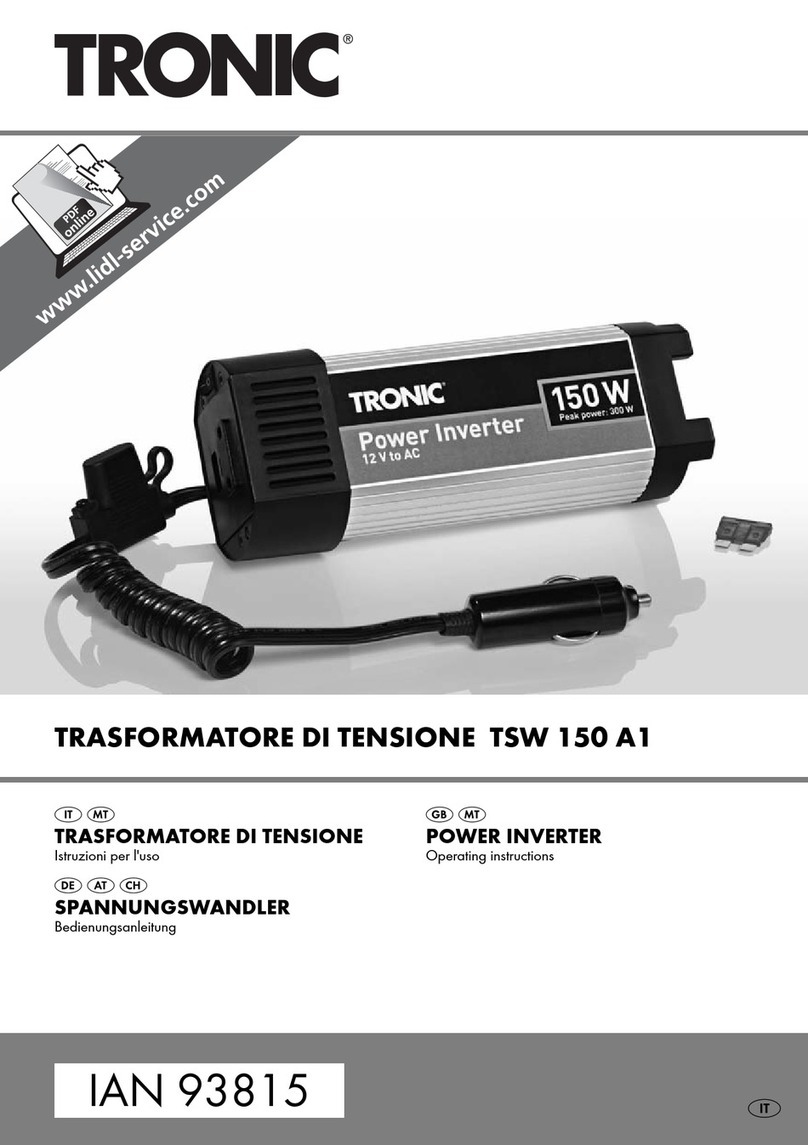
Tronic
Tronic TSW 150 A1 User manual

Tronic
Tronic TSW 150 A1 User manual

Tronic
Tronic TSW 150 A1 User manual
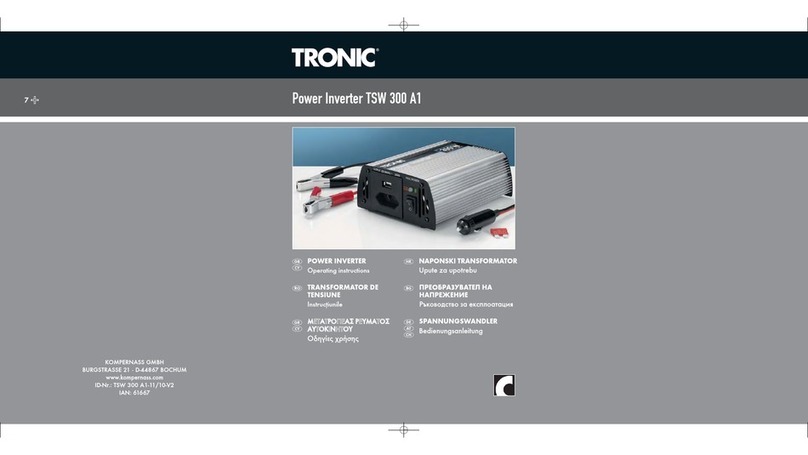
Tronic
Tronic TSW 300 A1 User manual

Tronic
Tronic TSW 300 A1 User manual
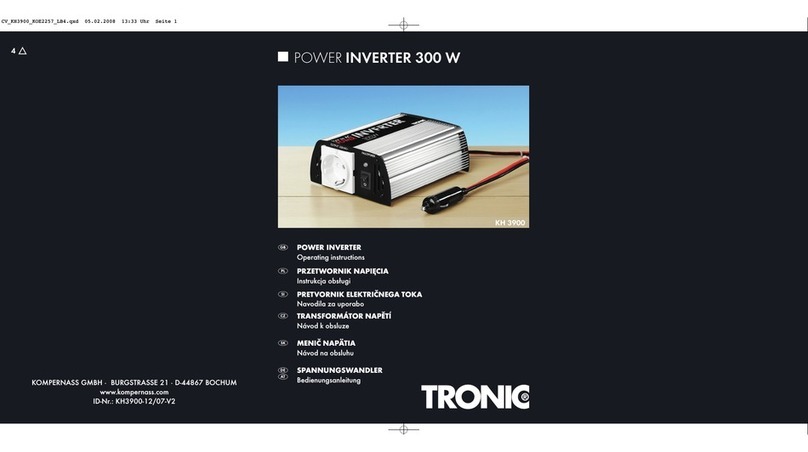
Tronic
Tronic KH 3900 User manual

Tronic
Tronic TSW 300 A1 User manual
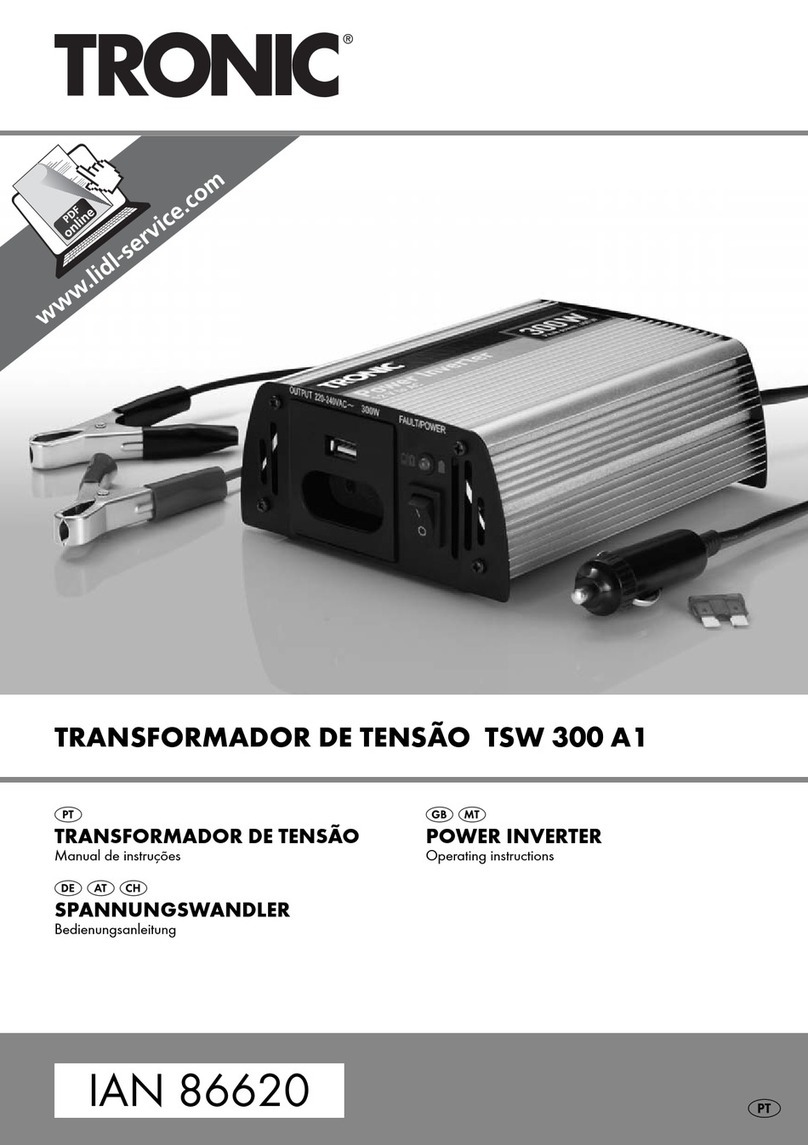
Tronic
Tronic 86620 User manual
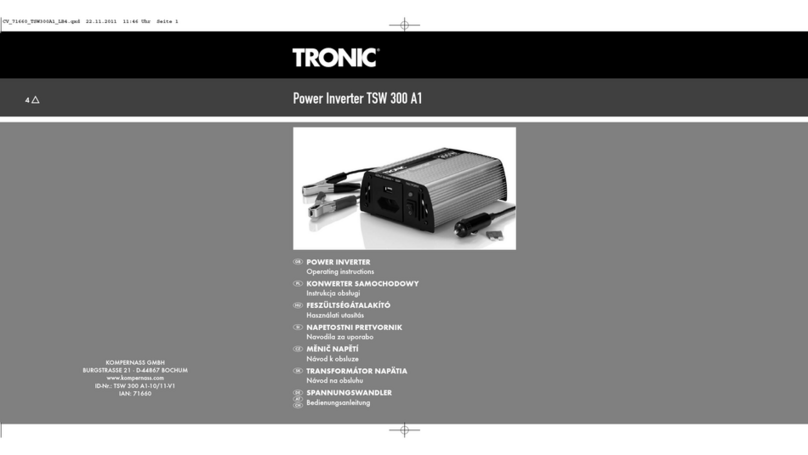
Tronic
Tronic TSW 300 A1 User manual

Tronic
Tronic TSW 300 A1 User manual






